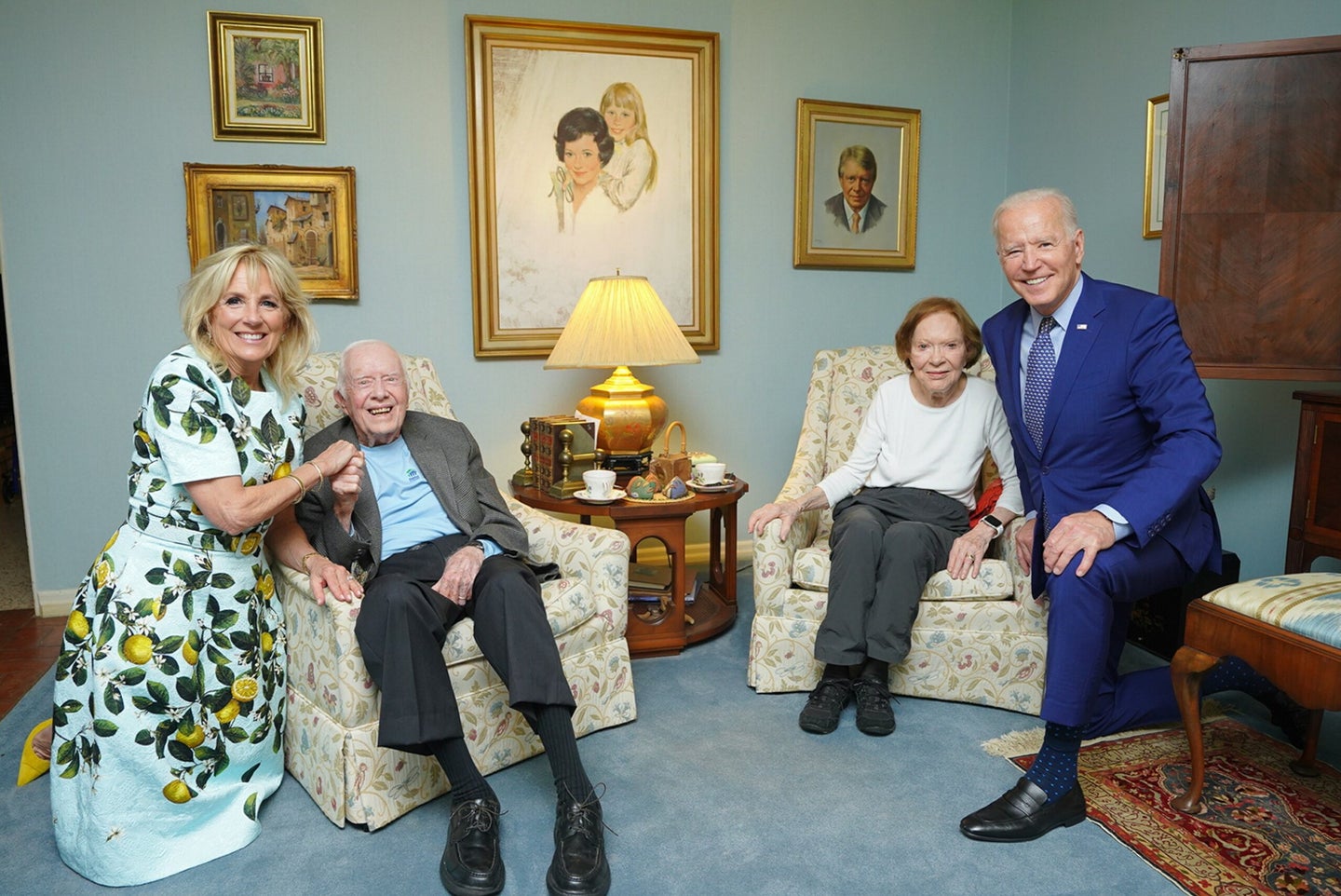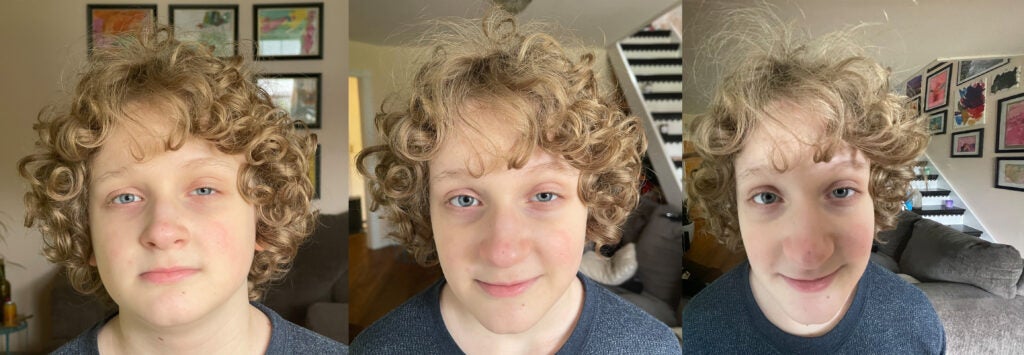It’s not simply wide-angle distortion making this photo of the Bidens and the Carters look weird
A recent viral photo of the president presents an opportune time to talk about perspective distortion.

By now, you’ve probably seen the picture of the President and First Lady Biden hanging out with former President and First Lady Carter. It’s notable for its historic aspects, but it also looks plain weird. The Bidens dwarf the Carters, who are sitting in oversized armchairs It almost seems Photoshopped.
I’ve already seen a few explanations kicking around attributing the weirdness to a wide-angle lens, but that’s only part of the story.
Yes, the photographer almost certainly used a wide-angle lens like the Nikon 14-24mm or Canon 16-35mm zooms. Both are extremely popular with photojournalists who typically like to get close to their subjects and often need to shoot in tight spaces.
When you shoot with a wide-angle lens, you’re going to get some distortion. You’ve probably already experienced this, but if not, fire up your phone’s ultra-wide camera (if it has one) and take a close-up picture of your face. Your nose will be enormous and your ears will fall away into the background. It’s not very flattering unless you’re going for the Johnny Depp in Fear and Loathing in Las Vegas look.
Super-wide-angle lenses rarely make for flattering portraits, especially up close. That’s in part because of the optical distortion inherent to the lens itself. Light from the very edges of the frame enters the lens at an extreme angle. Pick an object in your room that’s off to one side. (It should be 70 degrees rather than 90 degrees from your line of vision.) Now hold your smartphone or any other camera directly up to your eye. The sensor that catches the light will sit parallel with your face and faces straight ahead.Imagine the path light bouncing off of your off-center subject has to take to make it to that sensor. It’s a seriously sharp turn.
That weird light path leads to distortion. Many high-end lenses (especially zooms) have a glass element inside specifically designed to help correct this. But when you get very wide, it’s hard to overcome the amount of distortion that happens.
The different kinds of distortion
In wide-angle lenses, you’ll typically experience a phenomenon called barrel distortion in which the whole image appears to bow outward from the middle. For instance, if you take a picture of a square box on a lens with barrel distortion, it’ll look bloated with its edges curving outward.
The opposite effect is called pincushion distortion in which the image pushes in from its edges toward the middle of the frame. This happens more in longer lenses or at the longest end of a zoom lens. Lastly, there’s a hybrid form of distortion called mustache distortion in which the middle bows out more than the sides.
It can be hard to pin down exactly what kind of distortion you’re looking at if it’s not a straight-on shot with straight lines in the frame that would appear skewed. To combat any warping, photographers can use optical technique and software like Adobe Lightroom, which automatically applies lens profiles to images shot with specific glass to clean up the optical distortion. Every time you take a picture with your iPhone, it applies similar correction.
The presidential photo doesn’t have any EXIF data left to indicate exactly which lens was in use when it was taken, but it was obviously a wide-angle model. To say that it was simply “lens distortion” that makes the Carters and Bidens look disproportionate seems inaccurate.
It’s all about perspective
When you move closer or farther away from a subject using any lens, you experience a phenomenon called perspective distortion. This has little to do with the lens and everything to do with the distance between the camera and the subject and the relative distance between objects in the image.



Consider that wide-angle selfie you took with your smartphone. To fill the frame with your face, you have to get super close. Now let’s say you had to be four inches away from your face just to get a full-frame headshot. In that scenario, the distance between the tip of your nose and your ears is probably about the same distance.
Take a photo with that same super-wide angle lens from arm’s length and then zoom in on your face. You’ll lose some image quality because your phone’s camera doesn’t have a ton of megapixels, but you’ll also notice that your face looks fairly normal. That’s an example of perspective distortion.
Now consider the picture of the presidential families again. That photographer is almost certainly right up against his subjects due to space constraints, so they have to use a wide-angle lens to fit all the people into the frame. Rosalynn Carter is clearly farther away than any of the other subjects, which is why President Biden looks like a giant next to her. Just look at his foot—it’s almost even with Jimmy Carter’s.It’s the relationship between the objects and the distance from the photographer that matters here.
If you zoom in on Dr. Jill Biden’s face, which is the closest to the edge of the frame, you’ll see that it doesn’t appear stretched out if at all because it’s facing the camera straight on, so there’s no perspective distortion. With barrel distortion, you’d expect it to shrink as it approaches the edge of the frame. With pincushion distortion, you’d expect her face to stretch. In this case, it really hasn’t done much of either.
Because wide-angle lenses typically require photographers to get closer to their subjects, we often inexorably link the lenses themselves with the distortion effect. But it’s not always that simple. The classic photographic manual called Light: Science & Magic by Fil Hunter, Steven Biver, and Paul Fuqua goes out of its way to clear this up. “When most photographers first use a wide-angle lens, they decide that the lens introduces a great deal of distortion,” it states. “This is not quite accurate. Camera position determines perspective distortion, not the lens.”
So, what can you do with this tedious knowledge? Well, other than boring your friends with the differences between optical and perspective distortion, it could help you take better pictures. That includes selfies. If you hold the camera too close to your face, you’ll exaggerate the distance between your features, which could make you look bad. Try holding the camera a little farther away and then zooming in. Or just lean into it.
